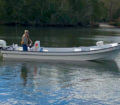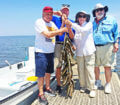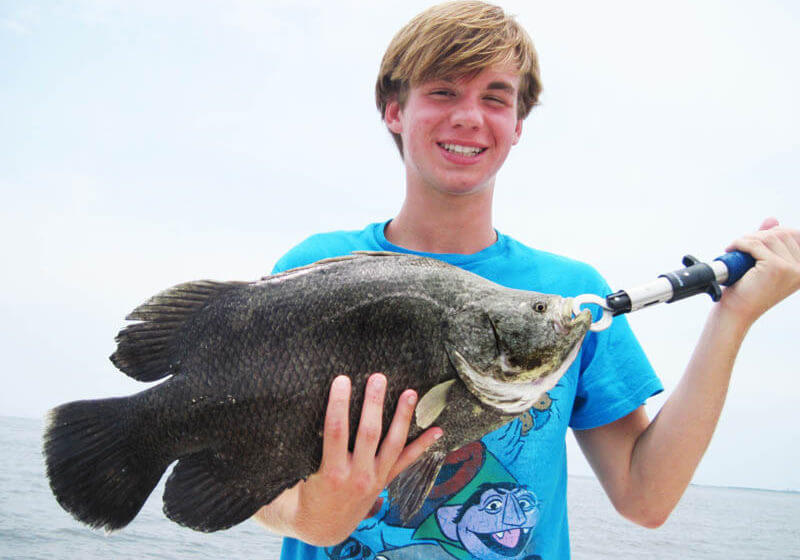Editor’s Note: Captain Mike Wilson of Silverhill, Alabama, guides on Alabama’s Gulf Coast. I asked him what he’s catching now from mid-August – the first 2 weeks in September. This report will apply to all of the Upper Gulf Coast and tell you what you can expect to catch while fishing then. Wilson not only fishes the Gulf of Mexico but also Mobile Bay (http://www.mobile.org/includes/content/docs/media/Regional-Map-June-2017.pdf) and the rivers that feed the bay and the Mississippi Sound.
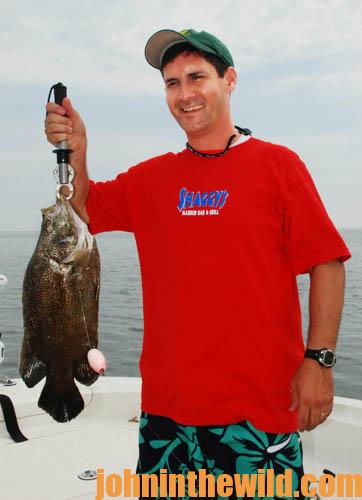 Before school started back in early – mid-August, a guide friend of mine told me he saw boat, after boat, after boat going by the same buoys trying to catch tripletails. Those boats were running there from 10-20 minutes apart, casting to buoy markers. The water looked like a train with so many cars passing the buoys and attempting to catch tripletails. The guide told me, “I wanted to shout out to those boats that another boat had fished that same buoy just 7 minutes before, but I kept my mouth shut.”
Before school started back in early – mid-August, a guide friend of mine told me he saw boat, after boat, after boat going by the same buoys trying to catch tripletails. Those boats were running there from 10-20 minutes apart, casting to buoy markers. The water looked like a train with so many cars passing the buoys and attempting to catch tripletails. The guide told me, “I wanted to shout out to those boats that another boat had fished that same buoy just 7 minutes before, but I kept my mouth shut.”
I guess people just now have learned what a hard-fighting fish the tripletail is and how delicious it is to eat. This year it seems as though all the anglers have gone nuts chasing tripletails. Some consider the tripletail an exotic fish, but if you find them, they’re not that hard to catch. They like to hold under buoys or anything floating on the surface of the water – brush, leaves, junk, etc. They’re fairly easy to entice to bite your bait. As far as tablefare goes, I think the taste of the tripletail is a step above grouper in how delicious it is.
My best bait to catch tripletails is to fish the biggest white shrimp I can find. But getting the tripletails to bite is actually the easiest part of trying to catch one. Because tripletails prefer to hang around buoys with chains that go down to the bottom, as soon as a tripletail gets hooked, it tends to dive and wrap the line around the buoy chain. Since buoy chains are generally rusty and encrusted with barnacles, the tripletails are often able to break lines.
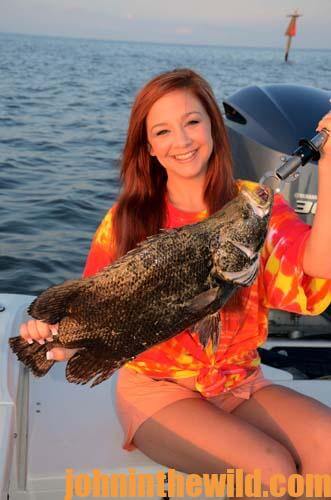 We catch tripletails by an angler casting to the tripletail from the front of the boat and casting upcurrent or upwind of the buoy where he’s spotted the tripletail. He lets a big shrimp drift by the buoy. If the tripletail takes that bait, the person in the back of the boat who’s operating the motor immediately shifts the motor into reverse and backs up hard and fast. This action usually pulls the tripletail away from the buoy chain. Then the angler can fight the fish in open water. The person running the boat must be quick to put the boat in reverse and back up fast. The fisherman must be braced for that quick reverse, since the tripletail will attempt to pull the angler towards the anchor chain, while the boat’s pulling the fish away from the anchor chain. For this technique to work, the fisherman and the captain must be on the same page and be ready for that quick reverse.
We catch tripletails by an angler casting to the tripletail from the front of the boat and casting upcurrent or upwind of the buoy where he’s spotted the tripletail. He lets a big shrimp drift by the buoy. If the tripletail takes that bait, the person in the back of the boat who’s operating the motor immediately shifts the motor into reverse and backs up hard and fast. This action usually pulls the tripletail away from the buoy chain. Then the angler can fight the fish in open water. The person running the boat must be quick to put the boat in reverse and back up fast. The fisherman must be braced for that quick reverse, since the tripletail will attempt to pull the angler towards the anchor chain, while the boat’s pulling the fish away from the anchor chain. For this technique to work, the fisherman and the captain must be on the same page and be ready for that quick reverse.
The angler must have a stout rod and strong line too and have the drag set tightly enough to pull the tripletail away from the buoy, but not so tightly that that sudden jerk will break the line. To catch tripletails, you must endure a tug-of-water to get the fish away from that buoy chain. However, the battle is worth the effort when you prepare and cook those delicious tripletails for dinner. The limit on tripletails is three per person per day with a minimum length limit of 18 inches. Any tripletails less than 18-inches long must be released.
To learn more, you can contact Captain Mike by emailing [email protected] or calling 251-747-6941. On Facebook, go to https://www.facebook.com/bamaslam.inshore/ where you can see his photos of the fish he and his parties have caught.
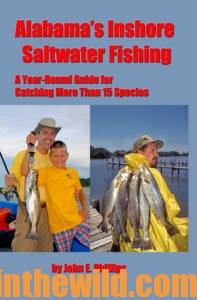 You can learn more about fishing parts of the Upper Gulf Coast from John E. Phillips’ books, the Kindle and print versions of “Alabama’s Inshore Saltwater Fishing: Year-Round Guide to Catching More Than 15 Species” at https://www.amazon.com/dp/B009EZR046; the Kindle version of “Catch Speckled Trout and Redfish: Learn from Alabama’s Best Fishermen” https://www.amazon.com/Catching-Speckled-Trout-Redfish-ebook/dp/B00CWE3O6O/; and the Kindle and print book versions of “Fishing Mississippi’s Gulf Coast and Visitors’ Guide” https://www.amazon.com/Fishing-Mississippis-Coast-Visitors-ebook/dp/B008DWLUZ6/.
You can learn more about fishing parts of the Upper Gulf Coast from John E. Phillips’ books, the Kindle and print versions of “Alabama’s Inshore Saltwater Fishing: Year-Round Guide to Catching More Than 15 Species” at https://www.amazon.com/dp/B009EZR046; the Kindle version of “Catch Speckled Trout and Redfish: Learn from Alabama’s Best Fishermen” https://www.amazon.com/Catching-Speckled-Trout-Redfish-ebook/dp/B00CWE3O6O/; and the Kindle and print book versions of “Fishing Mississippi’s Gulf Coast and Visitors’ Guide” https://www.amazon.com/Fishing-Mississippis-Coast-Visitors-ebook/dp/B008DWLUZ6/.

